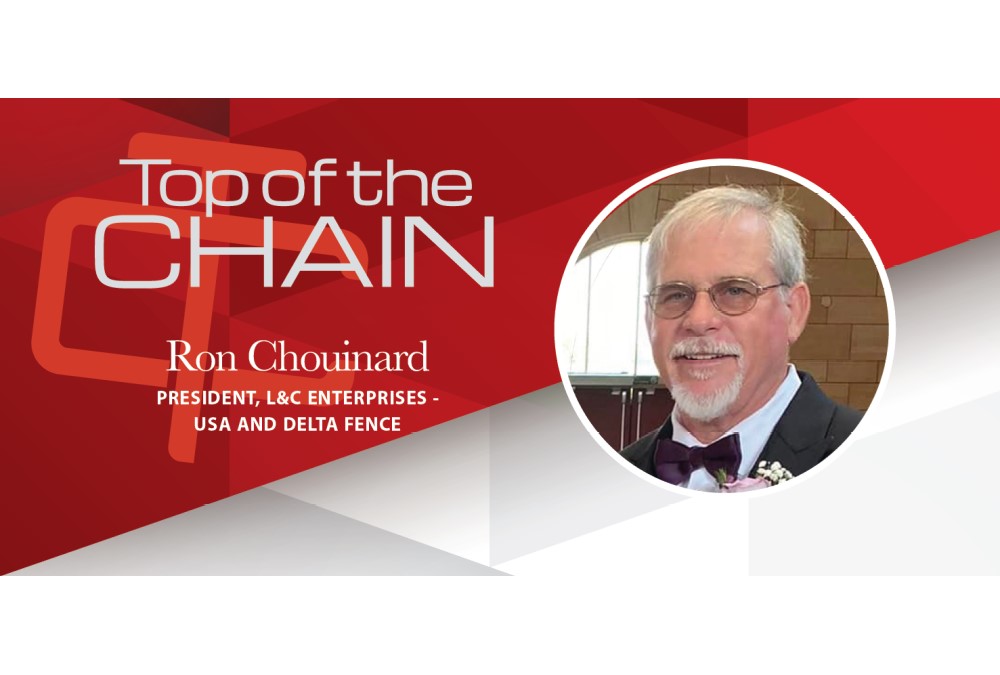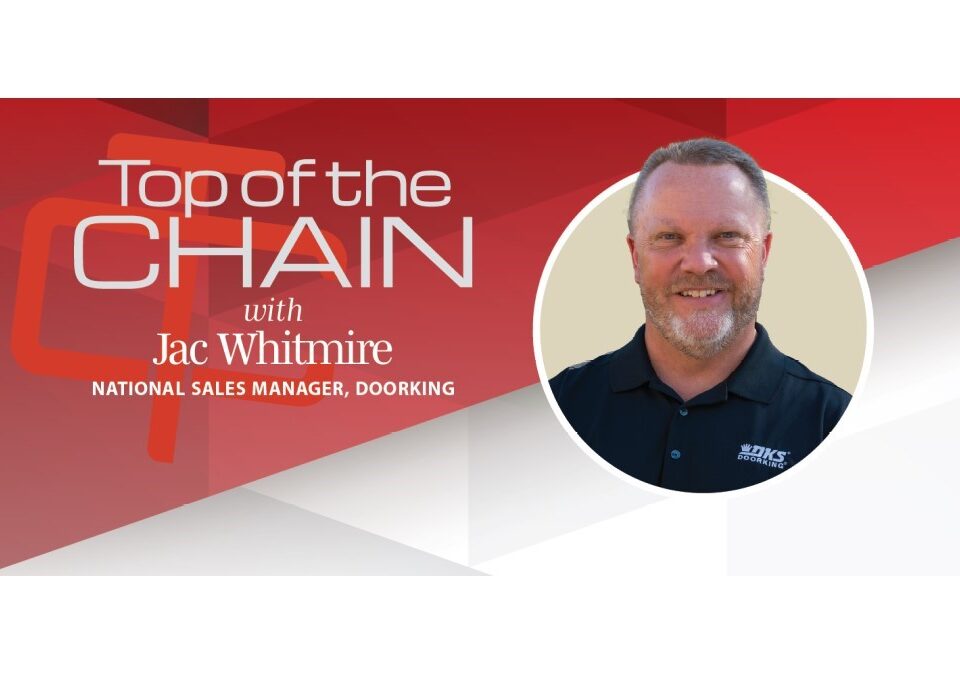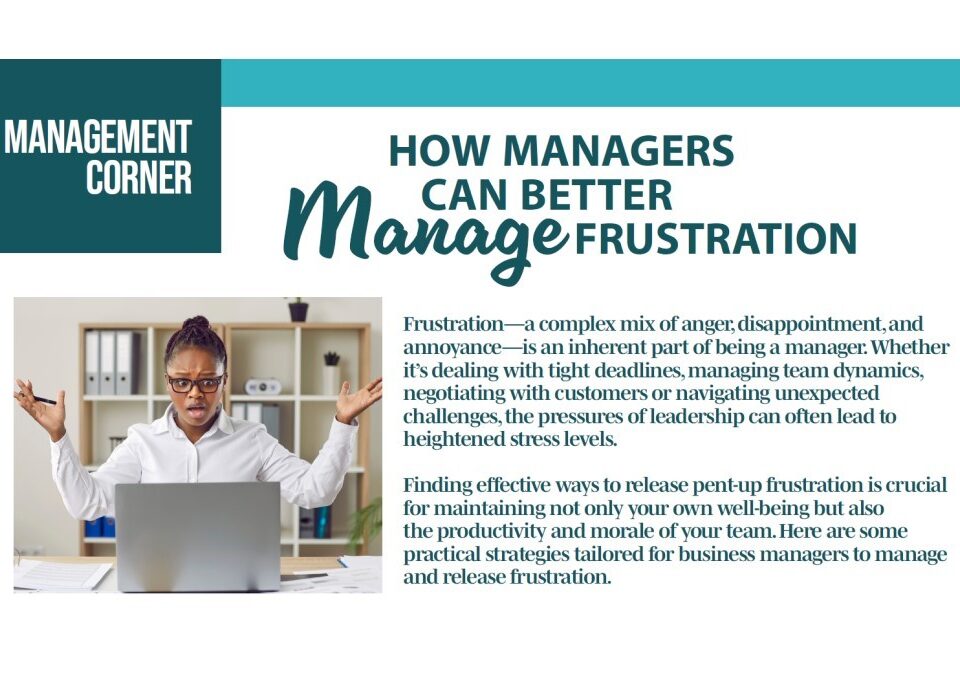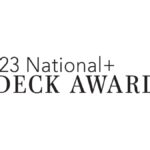
2023 National+ Deck Awards
January 29, 2024
Poly Vinyl Creations Takes Center Stage on Hulu’s 50/50 Flip Show
January 29, 2024Top of the Chain with Ron Chouinard
PRESIDENT, L&C ENTERPRISES - USA AND DELTA FENCE
“There has to be an easier way,” has been career motivating for Ron Chouinard, president of L&C Enterprises – USA and Delta Fence, both located in Michigan. It has led to innovation and better business practices, leading to enhanced customer service and a legacy as a premier provider within the fence industry.
HOW DID L&C ENTERPRISES BEGIN?
I started fencing when I worked for a road construction company in Lansing, Michigan, in 1988. I met Jeff Lancour, my business partner, a few years earlier on his dad’s farm when I was 11. I worked as a laborer for his dad; Jeff was like a big brother to me.
A couple years later, while working in road construction, Jeff asked me to be his crew foreman. We were doing seeding, mulching and some guard rail. While we were doing those jobs, the owner asked us to install a mile of 6’ tall fence with 6-guage fabric. We didn’t know how to do it, so we asked and were told to manually stretch the fabric by hand.
Knowing we had difficult terrain ahead, we thought to ourselves, “there must be a better way”. We drew plans for a machine to stretch, carry, and roll fabric out with a tractor. We brought our plans to a welder who built it for us. We named it the Installink Fence Dispenser, and it easily handled that job, which weighed about 310 pounds per 50’ roll.
Next, we took Installink to a fence industry trade show; it garnered a lot of interest. It was about this time that Bobcat loaders came out. Fencing installation moved from tractor-driven power to skid-steer operation. We went back to the drawing board and hired an engineer to update Installink enabling it to mount the fence dispenser on the front of the skid-steer instead of the back of a tractor.
We demonstrated the improved Installink to a Michigan company, leaving it with them for a week. When we went back, they said, “There’s no way you’re taking this from us!” The owner wrote us a check that day, saying, “Today, we both made money.”
We went around the country, demonstrating to fence companies how to use the Installink and showing them how it could save time and money.
In 1989, we formed L&C Enterprises - USA and in 1990, we established Delta Fence and Construction as the fence installation arm of our company. We’re located in beautiful Escanaba, Michigan.
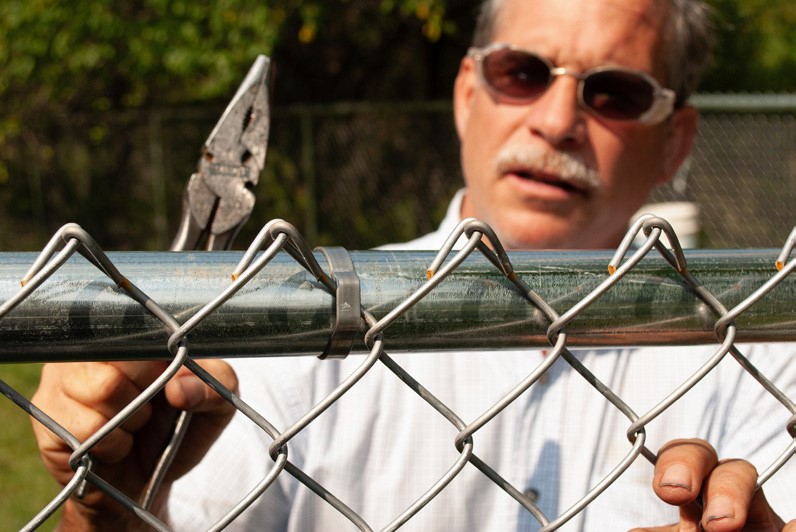
HOW DID TWIST TIGHT TIES COME ABOUT?
We found ourselves in another situation requiring a little outside-thebox thinking. A representative with a prison contacted us to tie the fence fabric a certain way. The ties had to be individually cut and bent to meet their requirements. The process was slow and difficult.
“There had to be an easier way” helped us think creatively, again. We devised a pre-formed tie that was easy to install and provided the security that the prison needed. It was the first in a line of Twist Tight Fence Ties. These make it easier for fence crews to install commercial chain link fence with less physical strain and greater efficiency.
After that job, we made our first tie machine, it made 1000 ties per hour. We continue to improve, and since then, we’ve developed the Easy Twist Ties that come in a variety of shapes and vinyl colors.
HOW HAS THE FENCE INDUSTRY CHANGED IN THE LAST 10 – 20 YEARS?
The fence industry was lacking in automation; everything was done by hand. Over time, the owners of fence companies see that, in many cases, equipment can do a better job than person power. Person power gets sick, injured, retires or goes to a different career. Equipment shows up to work each day.
I remember one company that bought an Instalink machine from us, and they also had a Bobcat. They named these two pieces of equipment. The owner said they were the best two employees he had; they showed up to work, don’t get sick and do their jobs.
I believe the chain link industry and fence industry are going to always be strong in our economy. Not because of product or price increases; it’s because of society. The days of leaving a car or house unlocked are gone. People are trying to find ways to make a buck by stealing. The world is becoming a more dangerous place. Fencing deters thieves.
WHAT DO YOU ENJOY ABOUT THE FENCE INDUSTRY?
I enjoy meeting people from all over the country. Through the years, I met and made friends with several highly respected people in the fence industry; people who helped change the industry and make it better. A few of these folks are Bill Ulrich, with Anchor Fence and a consultant with Chain Link Fence Manufacturers Institute; Bill Peters, president of Richard’s Fence; and Bob Majors with American Tube & Pipe. They, along with many others, have dedicated their lives to improving the fence industry. They were a big reason why I joined ASTM a while back, working to standardize how fences and fencing materials can be built, so everyone is building the same way.
Back in the day, companies were using inferior chain link fence material, and giving the chain link industry a bad reputation. We committed to using only higher gauge, quality chain link material and we’ve seen more companies in this area embrace chain link. My advice is to do quality work, use quality materials and use commercial grade products. Due to our commitment, we’ve built a good reputation for quality work.
WHAT OTHER WAYS HAVE YOU IMPLEMENTED INNOVATIVE PROCESSES?
We worked with manufacturers to make 100’ rolls in 9 gauge, these work best with Installink, and that’s where companies can save time and money. We did it by stretching barbed wire, three strands, 10’ up. We made a machine to go in front of our tractor. We made another machine that allows us to stretch barbed wire for free while we are going around and tying the fabric.
When we worked with airports or prisons, installing miles of fence, every lap around that fence counts. We were able to stretch the barbed wire and tie the fence all in one pass. That saved a lot of time.
In our shop, everything has a home, and everything has a place. If you teach everyone where things go, you don’t waste time looking for lost things. At the end of the day, you can take a quick look and you will know what is missing.
Time management is big. We even considered how much time is used with staff finding a bathroom; especially on jobsites where they must find a store or restaurant to use the facility. So, we even customized our fence trailer to have an outhouse in it. You don’t see that in the industry very often. Our custom-built fencing trailer has an outhouse, so our crew doesn’t have to inconvenience a client or take time away from the install driving to a public restroom.
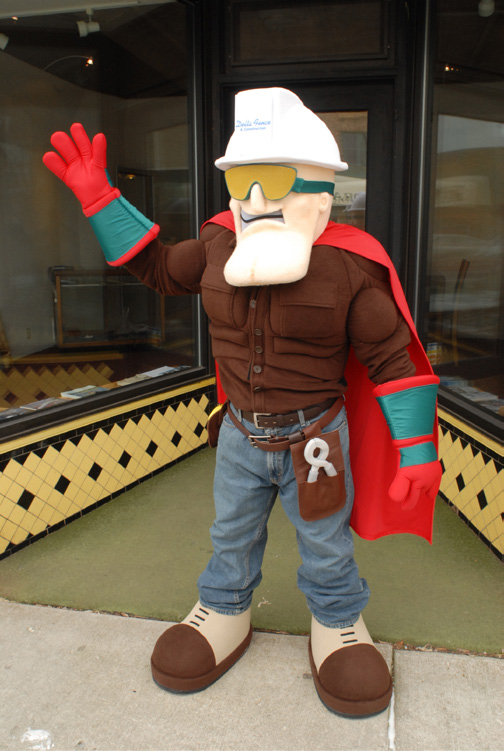
WHO IS FENCEMAN?
Fenceman came about because of the trade shows we went to in the 90s. We wanted a mascot who reflected our motto of making fencing more efficient. We had a friend in advertising, and he helped me develop Fenceman. He’s everybody’s hero. He wants to come to the rescue by taking care of the customer. It’s a fun way for us to promote the fence industry and encourage camaraderie among all of us involved in it.
WHAT BUSINESS PRINCIPLES HAVE SERVED YOU WELL?
Quality is the one principle we focus on most. Quality material, quality labor and quality people. Treat staff well, pay them a fair wage and train them because they are the face of the company. We believe every company should have a real person answer the phone and answer questions for clients or potential clients. Customer service is important. We enjoy talking with our customers. It’s a small community up here in the UP (upper peninsula); you really get a chance to know your neighbors and work with them. If you use quality materials, have a quality staff and are working with quality people, there is a good chance the job is going to be successful.
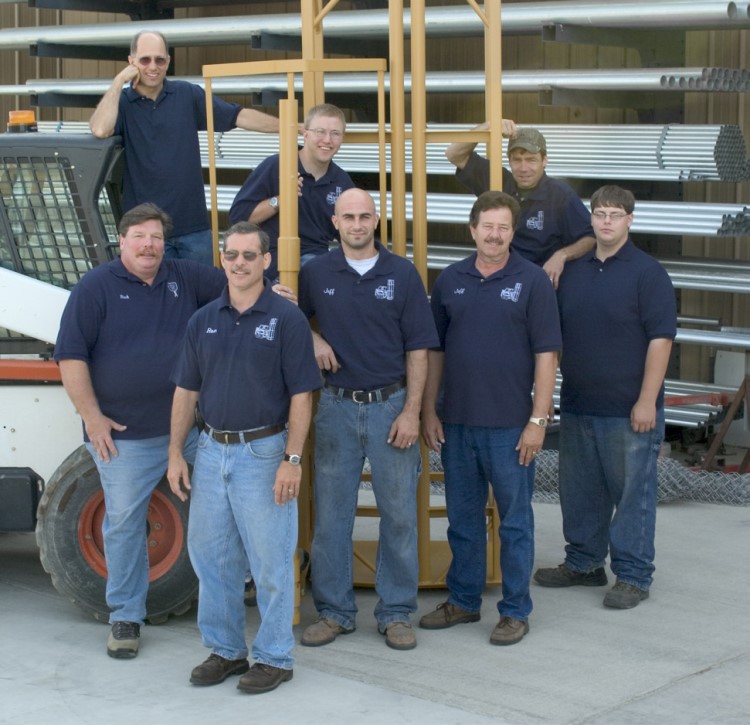
IS THERE A PARTICULAR JOB OR PROJECT THAT DIDN’T GO AS PLANNED?
One of our early jobs was in Grand Rapids, Michigan. It was an $800k job; we had to find a way to make money on it. It took eight months. This was when we first came up with our Barbed Wire Dispenser and Rapid Roller machine. We had 35,000’ of fence to remove and 50,000’ of new fence to install. So, there was a lot of fabric coming down and a lot of fabric going up and a lot of barbed wire going on top. At that time, we had to figure out a faster way to do it or we would be leaving money on the table.
At the time, I was doing bids by hand; this was before we had estimating software. I made a big mistake on the bid. I put the line posts in a $2.22 instead of $22. It was a $40k mistake, and it’s what got me the job! Sometimes, the person who makes the biggest mistake gets the job.
With this job, there was a main bid and a few additions to the bid. The engineer for the project was familiar with our work and recommended us. We ended up getting all four bids and were able to complete the whole job while under budget and making a profit.
In my opinion, a lot of businesses try to make their profit by skimping on quality; the customer ends up on the bad end of the deal. I disagree with that business practice. I like to find a way to do it faster and save money elsewhere, not on the quality of the product.
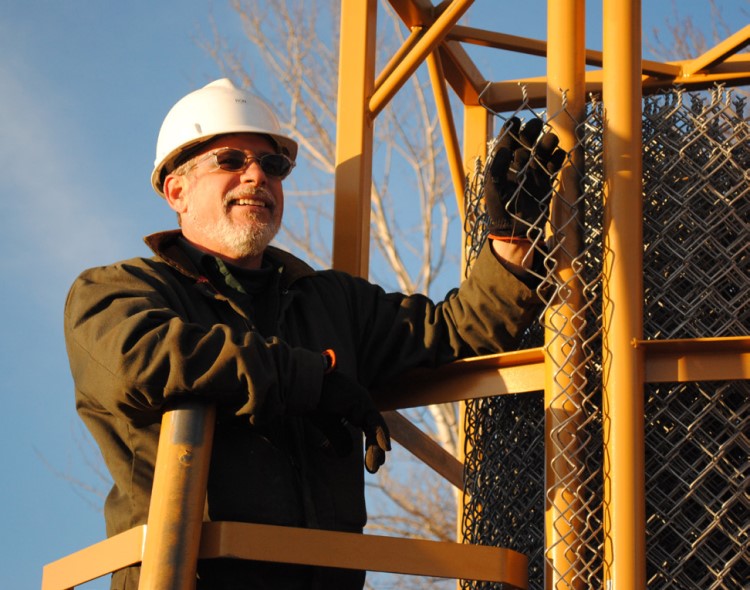
WHAT ADVICE WOULD YOU GIVE SOMEONE STARTING THEIR CAREER IN THE FENCE INDUSTRY?
Don’t undersell yourself, your skills, your knowledge or your labor! Your time and your labor are worth money. If you do quality work, you will get the jobs and you can charge more for them.

